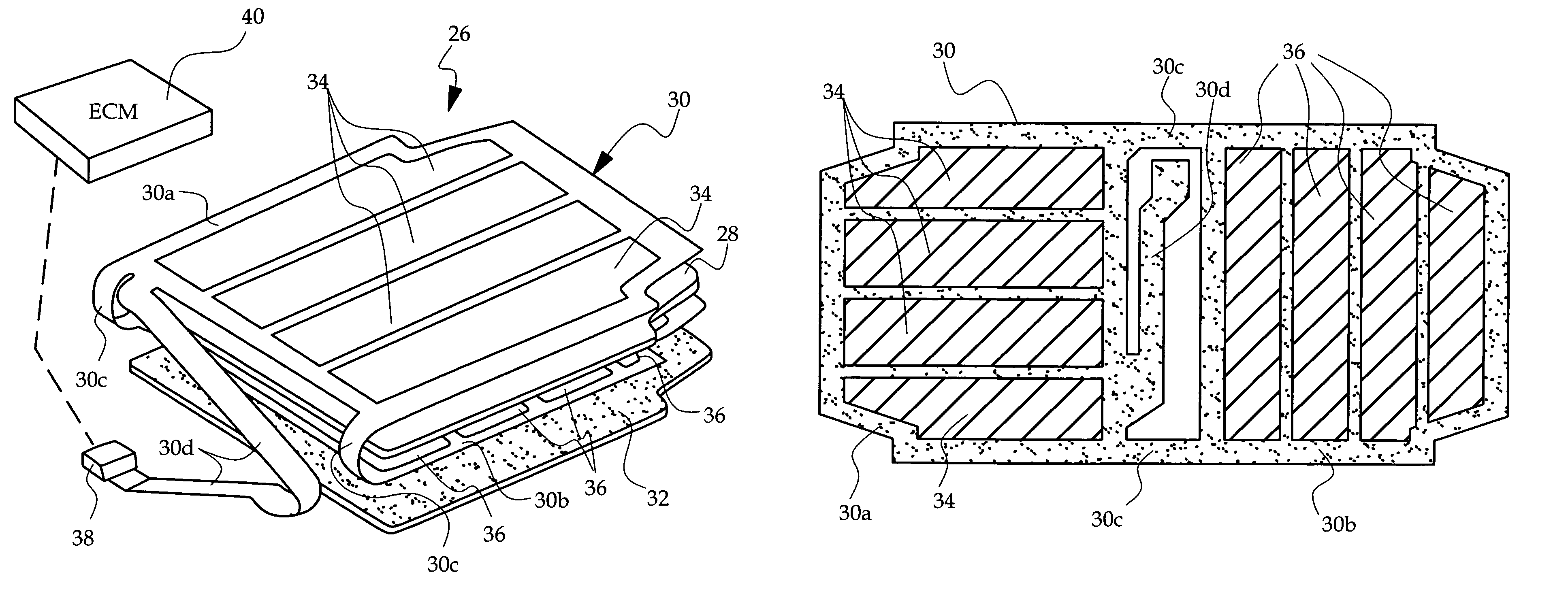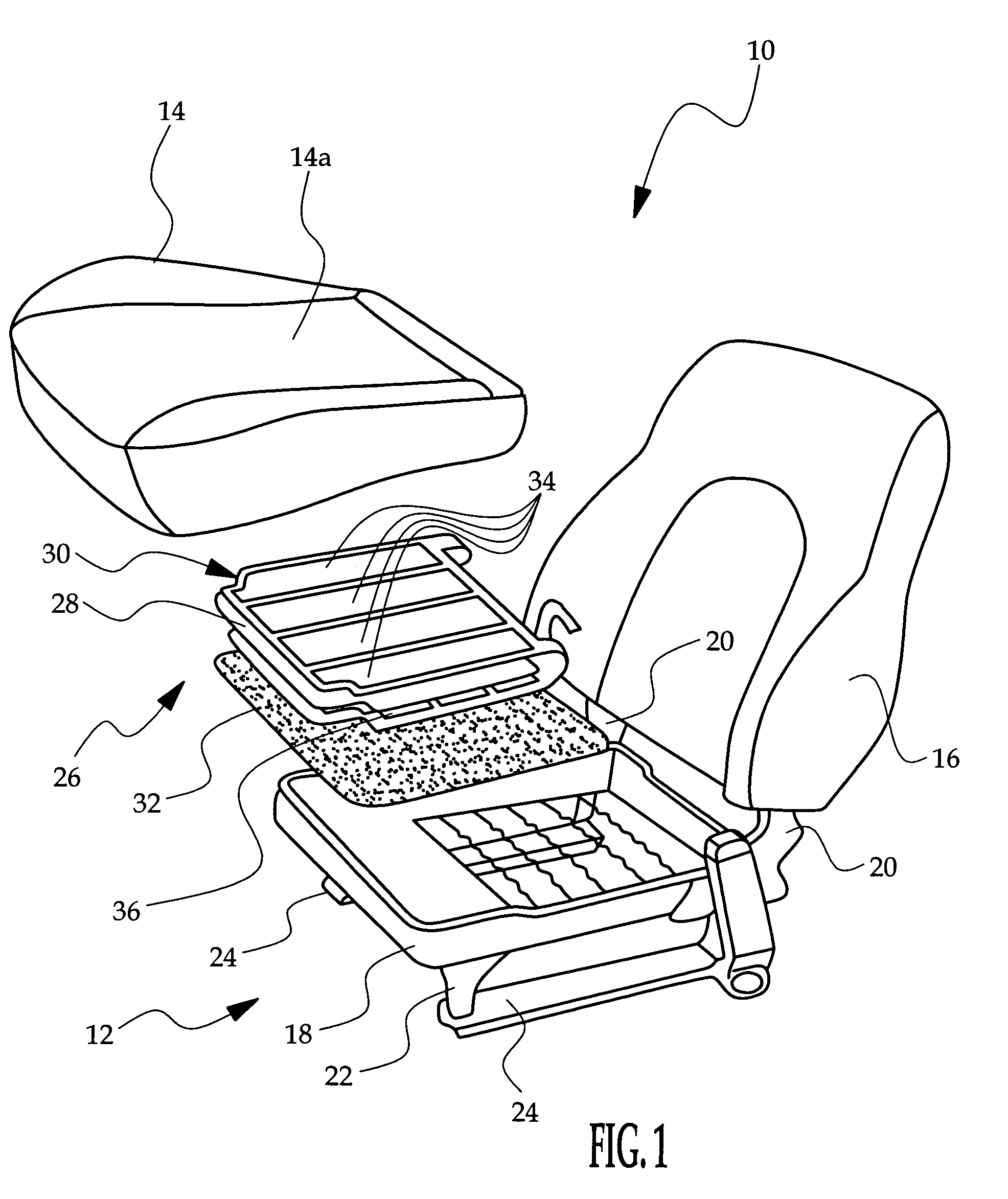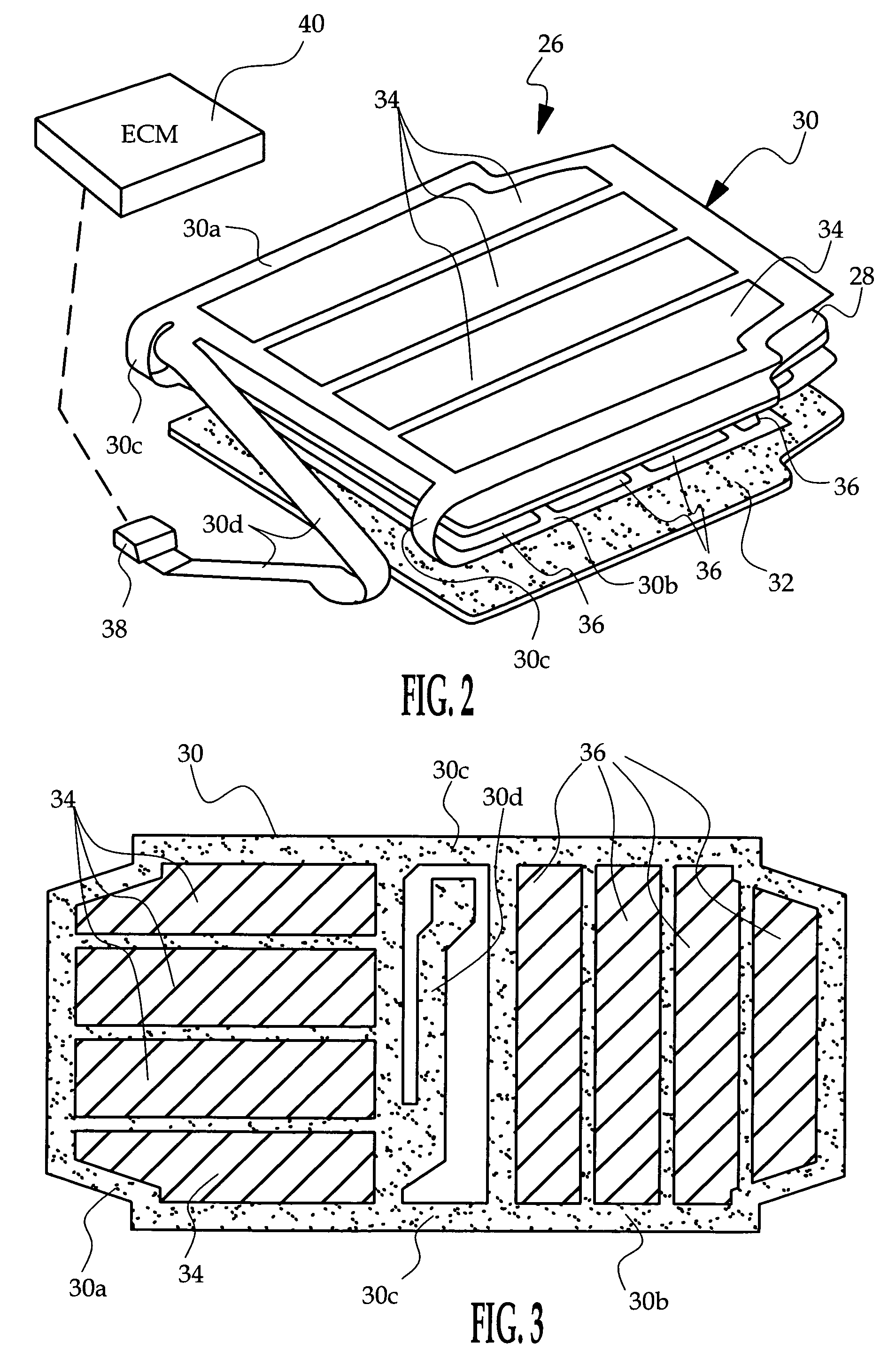Capacitive sensing apparatus for a vehicle seat
a sensing apparatus and vehicle seat technology, applied in the direction of instruments, apparatus for force/torque/work measurement, tractors, etc., can solve the problems of large development effort to determine optimal sensor placement for a given seat configuration, limited number of sensing elements, and limited overall resolution of the sensor pad, so as to reduce parasitic coupling and improve measurement resolution
- Summary
- Abstract
- Description
- Claims
- Application Information
AI Technical Summary
Benefits of technology
Problems solved by technology
Method used
Image
Examples
Embodiment Construction
[0010]Referring to FIG. 1, the reference numeral 10 generally designates a vehicle seat equipped with a capacitive sensing apparatus according to this invention. The seat 10 includes a frame assembly 12, a bottom foam cushion 14 and a back foam cushion 16. The frame assembly 12 includes a metal seat pan 18 with integral spring suspension for supporting the bottom foam cushion 14, and a set of depending frame elements 20 for supporting the back foam cushion 16. A set of posts 22 attach the seat pan 18 to pair of tracks 24, which in turn, are secured to the floor of the vehicle. A capacitive sensor assembly 26 is sandwiched between the bottom cushion 14 and the seat pan 18 for the purpose of determining occupant weight and weight distribution, as explained below.
[0011]Referring to FIGS. 1–2, the capacitive sensor assembly 26 includes a dielectric mat 28, a flexible printed circuit 30, and a felt pad 32 disposed between the flexible printed circuit 30 and the seat pan 18. In the illust...
PUM
 Login to View More
Login to View More Abstract
Description
Claims
Application Information
 Login to View More
Login to View More - R&D
- Intellectual Property
- Life Sciences
- Materials
- Tech Scout
- Unparalleled Data Quality
- Higher Quality Content
- 60% Fewer Hallucinations
Browse by: Latest US Patents, China's latest patents, Technical Efficacy Thesaurus, Application Domain, Technology Topic, Popular Technical Reports.
© 2025 PatSnap. All rights reserved.Legal|Privacy policy|Modern Slavery Act Transparency Statement|Sitemap|About US| Contact US: help@patsnap.com



